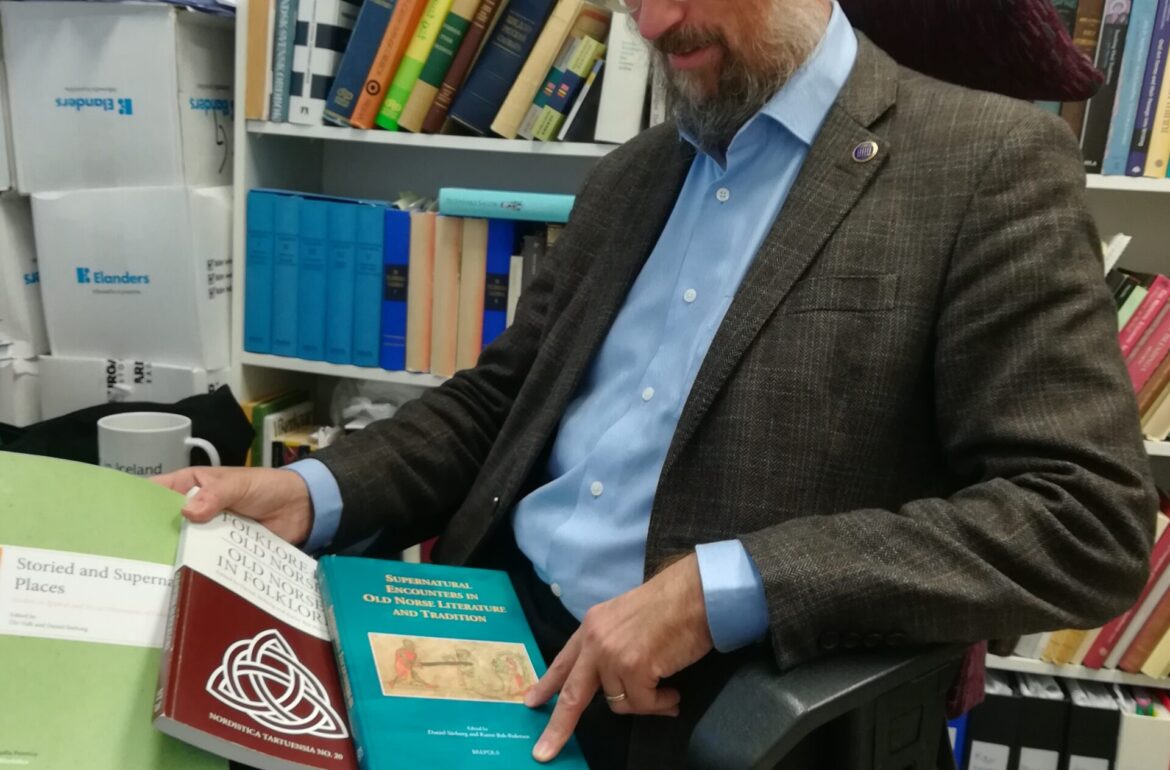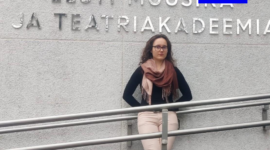Old Norse family sagas are the part of vernacular literature written by Scandinavian people up to 14th century. Although the stories are very realistic, usually connected with realism and down-to-earth conflicts, supernatural elements are also present and important in them. Most of the scholars have neglected these elements, but the professor of Scandinavian studies at the University of Tartu, Daniel Sävborg, has inversely felt special interest in these parts.
Old Nordic literature has been Sävborg’s focus for a very long time, because Icelandic sagas are very rich and fascinating material, as he said. What is more, he mentioned that Icelandic authors wrote more over 100 years than Swedish authors wrote during the whole medieval times. So, the culture of Iceland had the one with the largest vernacular literatures in Europe during those times.
With his four-year project, he wanted to throw light on these parts exactly, which have generally been neglected, and with the help of new perspectives, regarding comparative material as well as theory. “The Old Norse stories are realistic, about farmers’ lives, for example, but there are also trolls and other supernatural beings as characters. They have been seen as some sort of anomaly and therefore it seems that these have not been researched, as they do not fit into the general picture of what Icelandic sagas should look like”, he explained.
Different People Interpreted Supernatural Differently
He also wanted to use a folkloristic approach, since until now, the Old Norse literature has been largely studied by the philologists, who are mainly analysing written text and language, but the folkloristic view opens new aspects of the stories and also give material for comparison with the later stories.
“My goal was to see the supernatural elements in the folkloristic way to understand them as a possible part of the people’s folk belief in the time when the text was written”, Sävborg noted. “It is quite clear that nowadays it is maybe rather peculiar to have superstitions, but in medieval times, it was an important part of people’s lives. They believed that that trolls and spirits lived in the mountains and forests, for example.”
As one of the most important results, Sävborg named the very clear distinction between learnt and popular discourse. “Earlier scholars have considered supernatural as a purely literary motif in the sagas, but I would say that it reflects a real thing. But of course, I could determine very different treatment of supernatural characters in the different type of texts. In the texts written by priests, for example, supernatural characters were basically manifested demonic spirits, demons and devils, but not an independent species, as they were interpreted in the sagas of farmers, for example. For regular people, trolls were species who lived in the mountains and had families etc”, he described and added that this distinction can explain the depiction of supernatural beings in different texts.
Helps to See Deeper
Sävborg sees that the same distinction can be used in the future when working with some other supernatural medieval texts, because by using this, it is possible to see so much more in the texts. As one more recommendation to colleagues or contribution to the science he named, the general idea is to use a more folkloristic approach and compare earlier texts with later ones.
During his project, Sävborg published many publications and some books, and he has some more articles coming. He also plans to continue supernatural studies and research oral narratives and traditions, maybe with an ex-doctoral student from Reykjavik.
Written by Marii Kangur
This article was funded by the European Regional Development Fund through Estonian Research Council.
 Back
Back



